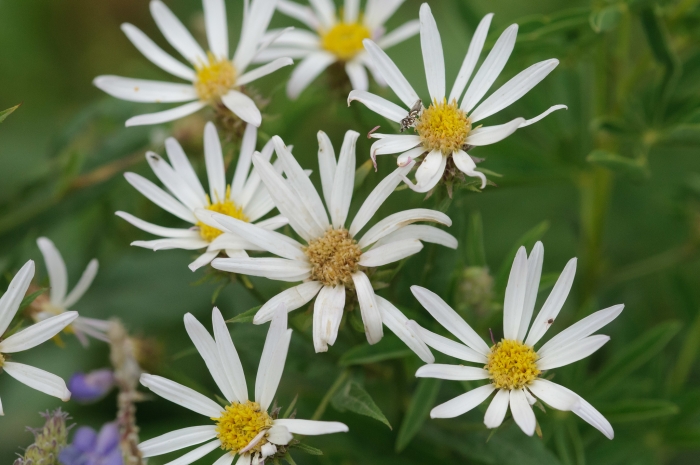Engelmann’s Aster
(Eucephalus engelmannii)
Engelmann’s Aster (Eucephalus engelmannii)
/
/

Rolf Lawrenz
CC BY 4.0
Image By:
Rolf Lawrenz
Recorded By:
Copyright:
CC BY 4.0
Copyright Notice:
Photo by: Rolf Lawrenz | License Type: CC BY 4.0 | License URL: http://creativecommons.org/licenses/by/4.0/ | Rights Holder: Rolf Lawrenz | Publisher: iNaturalist | Date Created: 2018-07-26T19:11:53-07:00 |

























Estimated Native Range
Summary
Eucephalus engelmannii, commonly known as Engelmann’s aster, is a perennial herb that thrives in subalpine and alpine environments, including mountain woods and meadows. Its native range extends from Alberta and British Columbia through the Pacific Northwest to northern California and eastward to Colorado. Engelmann’s aster typically grows up to 5 feet tall and features oval to lance-shaped leaves. From late summer to early fall, it produces numerous flower heads, each with white to pinkish or purplish ray florets encircling a center of yellow disc florets, which are moderately showy and attract pollinators.
Engelmann’s aster is valued for its late-season blooms that add color to wildflower gardens and naturalized areas. It is often used in restoration projects due to its adaptability and the ecological role it plays in supporting native pollinators. In cultivation, it prefers well-drained soils, tolerates a range of soil types, and requires moderate watering, thriving in full sun to partial shade. While generally low-maintenance, it can be susceptible to powdery mildew in humid conditions.CC BY-SA 4.0
Engelmann’s aster is valued for its late-season blooms that add color to wildflower gardens and naturalized areas. It is often used in restoration projects due to its adaptability and the ecological role it plays in supporting native pollinators. In cultivation, it prefers well-drained soils, tolerates a range of soil types, and requires moderate watering, thriving in full sun to partial shade. While generally low-maintenance, it can be susceptible to powdery mildew in humid conditions.CC BY-SA 4.0
Plant Description
- Plant Type: Shrub, Herb
- Height: 1.75-6 feet
- Width: 1-1.5 feet
- Growth Rate: Moderate
- Flower Color: Pink, White
- Flowering Season: Summer, Fall
- Leaf Retention: Deciduous, Semi-deciduous
Growth Requirements
- Sun: Part Shade, Full Shade
- Water: Medium
- Drainage: Medium, Slow
Common Uses
Border Plant, Butterfly Garden, Low Maintenance
Natural Habitat
Native to subalpine and alpine environments, including mountain woods and meadows
Other Names
Common Names: Engelmann’s Daisy
Scientific Names: , Eucephalus engelmannii, Aster elegans var. engelmannii, Aster engelmannii, Aster engelmannii var. engelmannii, Doellingeria engelmannii,
GBIF Accepted Name: